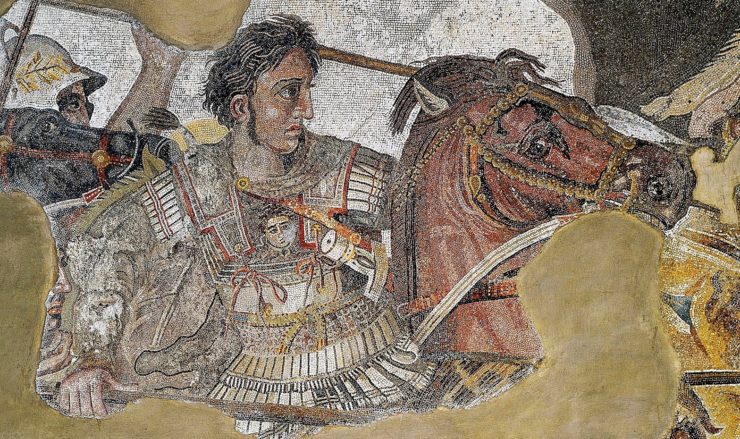Drone Discovers One of Alexander the Great’s Lost Cities
 Drones recently found one of Alexander the Great’s long lost cities. The city was found in Iraq, and is believed to have been founded by Alexander the Great during his long campaign to conquer the known world in ancient antiquity.
Drones recently found one of Alexander the Great’s long lost cities. The city was found in Iraq, and is believed to have been founded by Alexander the Great during his long campaign to conquer the known world in ancient antiquity.
The lost city, called Qalatga Darba, is located in Norther Iraq, and was lost to history over 2,000 years ago until it was recently found by several British researchers, who stumbled upon its location when one of their drones accidentally spotted it.
After confirming the location of the buried city, the archeological team launched a drone equipped with special cameras to photograph the outline and contents of the city. Initial images from the drone’s camera show several ruins that may have been the city’s temple, inner fort, walls, wine press and city gate.
Searching for the city had not been easy however. After years of warfare, the area has only recently become secure enough for archeological operations, and the team’s drones have helped to make their work easier and safer. The archeologist in charge of excavations, John MacGinnis, reports that the drones they used were able to acquire high quality images of several structures in the city.
“The drone yielded excellent information,” MacGinnis reports, and adds that they were able to use their drones to identify buried structures by analyzing color differences in local wheat and barley, as well as variations in crop growth. So far, with their drones’ help, the team already managed to acquire several important artifacts from the site, including coins and pieces of statues.
Qalatga Darband is believed to have been built by Alexander of Macedon in 331 BC during his pursuit of Darius III, King of Persia, shortly after the battle at Gaugamela. The city may have served as a logistical supply station, or even as a trade center to connect the major cities between Iran and Iraq.
While excavating the site, the archeological team discovered several Greco-Roman status as well as terracotta roof tiles with strong Greek designs, which seem to indicate that the early residents of the area may have been Greek subjects of Alexander or one of his successors. The archeological team is already returning to the site very soon to identify other potential artifacts in the area.
The discovery of Qalatga Darband is not news for the proponents of drone technology. Drones have been used for archeological work for years, and they will likely see more use as the technology improves in the years to come. Archeological sites, like the Sissi excavations at the island of Crete, Cerro Chepen in Peru and a local hillfort at Clwydian Range in Wales, all employed drones to carry out archeological work.
Some teams use their own drones, while others prefer to outsource their operations to specialized service providers, but the outcome is the same. Drones are effective archeological tools thanks to their surveying capabilities and their ability to seek out new excavation sites. Unlike manned aircraft, drones are more maneuverable, and they can fly closer to the ground. They are also relatively more affordable, which is quite useful for archeological teams with limited budgets.
|